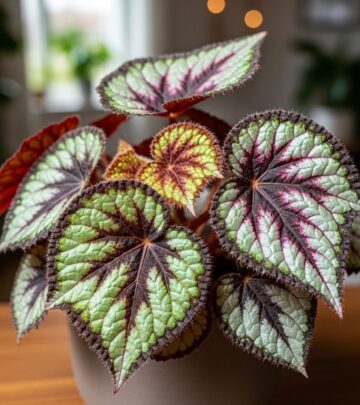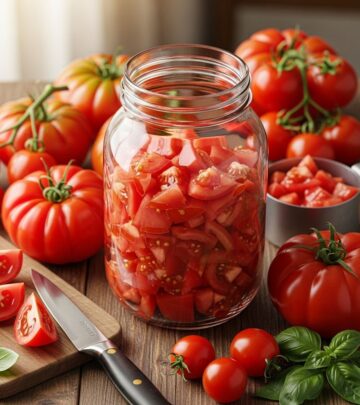How To Grow Rambutan Trees: A Comprehensive Guide
Master the essentials of growing and harvesting the unique, tropical rambutan tree successfully.

Image: HearthJunction Design Team
Introduction to the Rambutan Tree
The rambutan tree (Nephelium lappaceum) is a tropical fruit tree renowned for its distinctive hairy, colorful fruits that resemble lychees. Native to Southeast Asia, this heat-loving evergreen thrives in warm, humid climates and is prized for its sweet, juicy flesh reminiscent of grapes. If you’re interested in cultivating an exotic tropical tree that offers unique fruit and aesthetic appeal, the rambutan tree is an excellent choice.
Rambutan Tree Overview
| Plant Type | Family | Genus | Species | USDA Hardiness Zone | Maintenance | Height | Soil Type | Water Needs | Sun Exposure | Fruit Season | Pests and Diseases |
|---|---|---|---|---|---|---|---|---|---|---|---|
| Fruit Tree | Sapindaceae | Nephelium | Nephelium lappaceum | 10-12 | Moderate | 32-82 ft (10-25m) | Well-draining loam | Moderate | Full sun | Summer | Weevils, stink bugs, leaf miners, powdery mildew |
Climate and Growing Conditions
Rambutan trees require a tropical or subtropical climate, thriving best in USDA Zones 10 through 12. These trees need consistent warmth and high humidity to flourish and bear fruit successfully. Ideal temperature ranges are between 70°F and 90°F (21°C to 32°C), and the tree cannot tolerate frost or temperatures below 40°F (4°C).
Humidity plays a vital role; the tree favors environments with relative humidity above 75%. For gardeners outside these zones, growing rambutan in a greenhouse or a controlled indoor environment is an option to simulate the necessary heat and moisture.
Soil Requirements
Rambutan trees prefer well-draining, fertile loam soils rich in organic matter. The soil pH should be slightly acidic to neutral, ranging from 5.0 to 6.5. Good drainage is critical to avoid root rot since these trees dislike waterlogged soils. Incorporating compost or aged manure can improve soil fertility and moisture retention.
Planting Rambutan Trees
Propagation of rambutan trees can be done through seeds or grafting:
- Seed Propagation: Seeds can be planted but may not produce fruit true to the parent tree and generally take 6-7 years to bear fruit.
- Grafting: This is the preferred method because grafted trees usually fruit within 3-4 years and maintain the desirable traits of the parent tree.
When planting, select a location with full sun exposure and ample space, as mature trees can reach heights up to 80 feet. Dig a hole twice the width and depth of the root ball, position the tree, backfill with soil, and water thoroughly.
Watering and Fertilization
Rambutan trees require moderate but consistent watering, especially during dry spells. They favor moist soil but not saturation. Insufficient watering results in browning leaf tips and poor fruit production. During the hottest months, increase water to maintain soil moisture.
Fertilize regularly with balanced fertilizers rich in nitrogen, phosphorus, and potassium. Supplementing with micronutrients like magnesium and calcium can also promote healthy growth and fruit quality. A schedule of feeding every 6-8 weeks during the growing and fruiting season is beneficial.
Pruning and Maintenance
Pruning is essential to maintain the shape, remove dead or diseased branches, and improve air circulation through the canopy. It also helps direct the tree’s energy toward fruit production rather than excessive leaf growth. Prune after the fruiting season or during the dormant period.
Pests and Diseases
Common pests affecting rambutan trees include:
- Weevils – can bore into the wood causing damage.
- Stink bugs – feed on the fruit and leaves.
- Leaf miners – larvae that tunnel into leaves causing discoloration.
Diseases to watch out for include powdery mildew, a fungal infection that appears as a white powdery coating on leaves and shoots. Proper spacing, pruning, and fungicide application are preventive measures to reduce outbreaks.
Harvesting Rambutan Fruit
The rambutan fruit matures in summer and is typically harvested when the skin turns bright red, yellow, or orange depending on the variety. The hairy spines on the fruit soften and become colorful, signaling ripeness. To harvest, cut clusters of fruit carefully to avoid damaging the branches.
Once harvested, remove the hairy rind to reveal translucent, juicy flesh inside. The flesh is sweet and can be eaten fresh, used in desserts, or canned.
Growing Rambutan in Non-Tropical Regions
For gardeners in cooler or less humid climates, growing rambutan indoors or in greenhouses is an option. Maintain high humidity with regular misting or humidity trays, provide supplemental heat, and ensure full sunlight or use grow lights. Potted rambutan trees need frequent watering and fertilization due to limited soil volume.
Common Mistakes When Growing Rambutan
- Insufficient Watering: Rambutan trees require more water than many tropical fruit trees; neglect causes leaf browning and poor growth.
- Temperature Fluctuations: Rambutan trees are sensitive to cold and sudden temperature drops which can stunt growth or kill the tree.
- Poor Soil Drainage: Waterlogged soil leads to root rot; ensure well-draining sites and raised beds if necessary.
- Ignoring Pest Control: Early identification and treatment of pests prevent serious damage.
- Wrong Planting Location: Lack of full sun or cramped spacing will reduce flowering and fruit yield.
Frequently Asked Questions (FAQs)
Q: Can rambutan trees grow in pots?
A: Yes, rambutan trees can be grown in large pots in greenhouses or indoors with controlled conditions, but they require frequent watering and feeding.
Q: How long does it take for a rambutan tree to fruit?
A: Grafted rambutan trees typically produce fruit within 3-4 years, whereas seed-grown trees can take up to 7 years.
Q: What is the best climate for growing rambutan?
A: Warm, humid tropical areas with temperatures between 70°F to 90°F (21°C to 32°C) and USDA zones 10-12 are ideal.
Q: Are rambutan fruits nutritious?
A: Yes, rambutan fruits are rich in vitamin C, antioxidants, and minerals, making them a healthy addition to the diet.
Q: How do you prevent pests on rambutan trees?
A: Regular monitoring, maintaining tree health, pruning, and applying organic or chemical pest controls when necessary help prevent infestations.
Conclusion
Growing rambutan trees can be a rewarding endeavor, especially for those living in tropical climates. This unique fruit tree brings exotic flair to any garden with its striking fruits and lush canopy. By providing optimal heat, humidity, water, soil conditions, and attentive care, gardeners can enjoy fresh rambutans harvested right from their own yard or greenhouse. Whether for personal enjoyment or as a potential small-scale fruit crop, the rambutan tree is a fascinating tropical treasure worth cultivating.
References
Read full bio of Anjali Sayee












